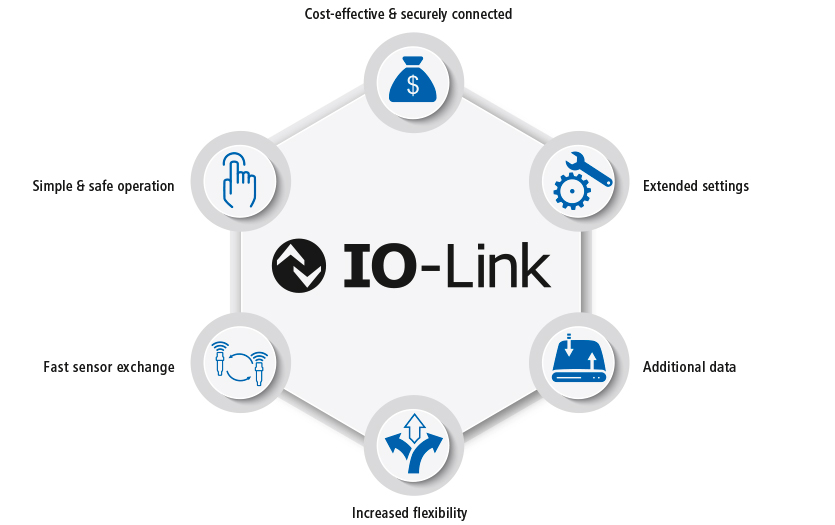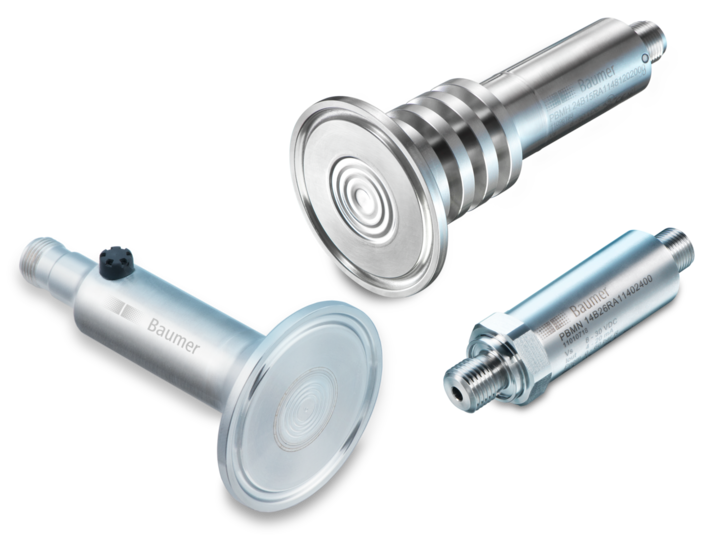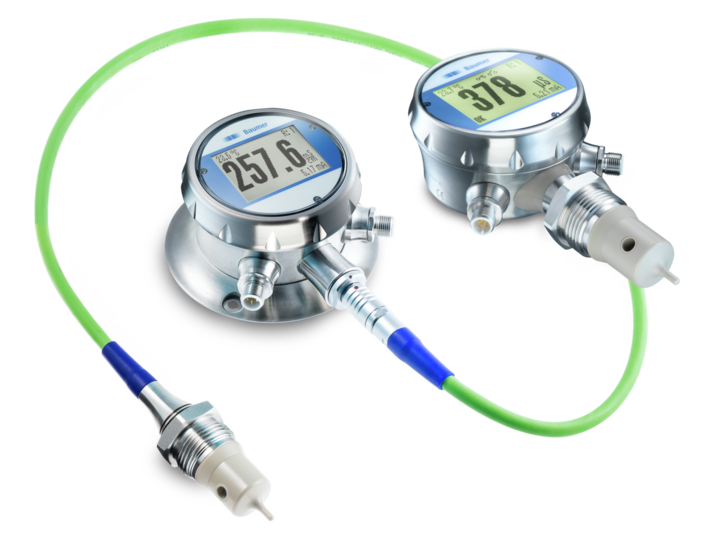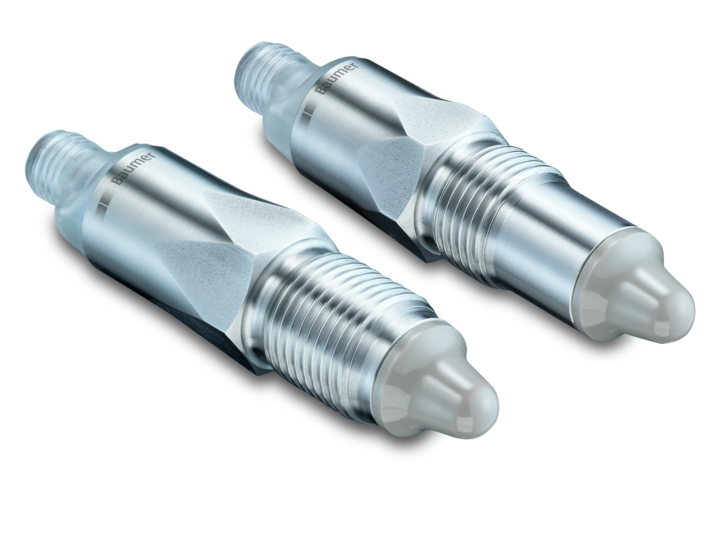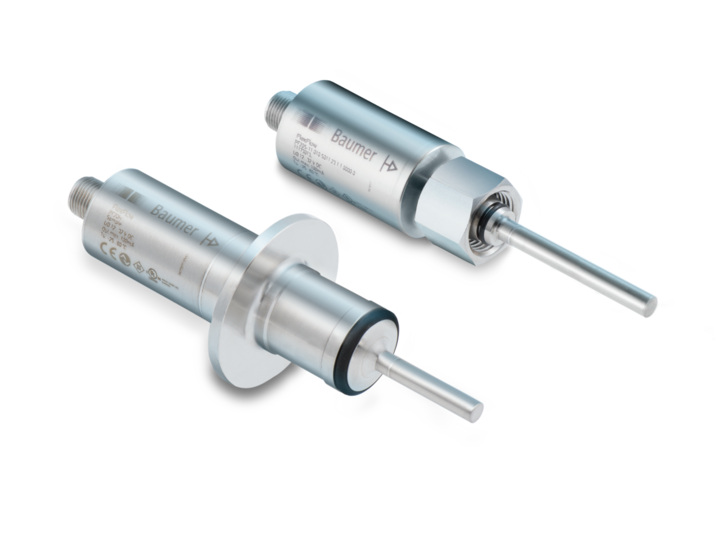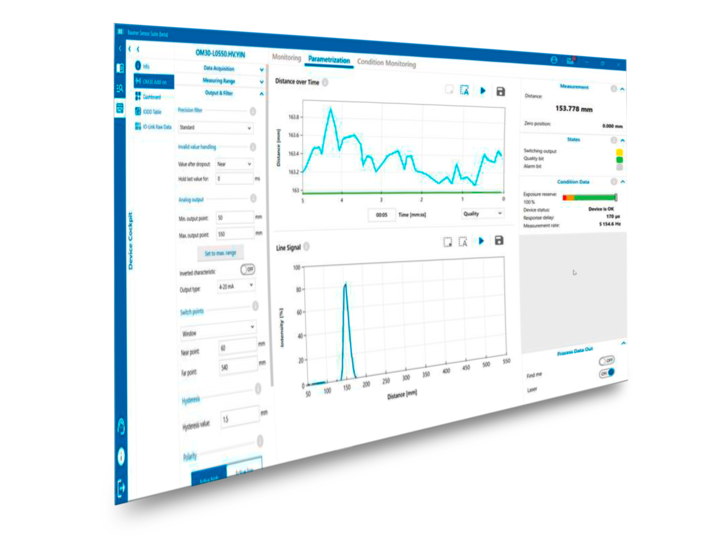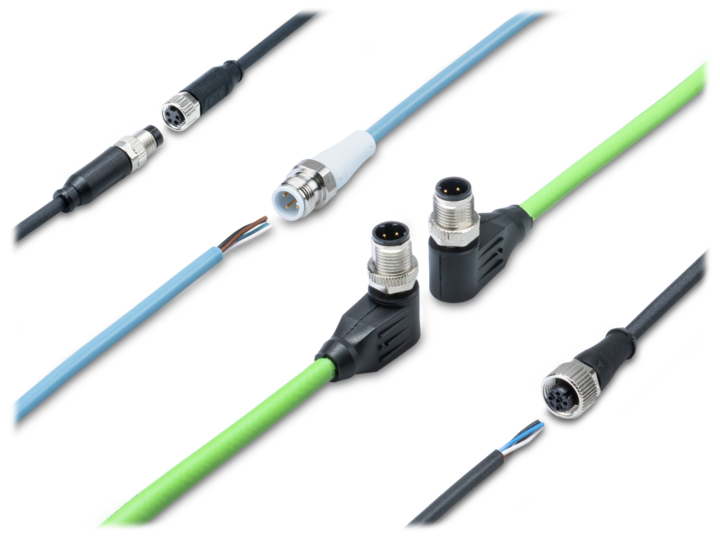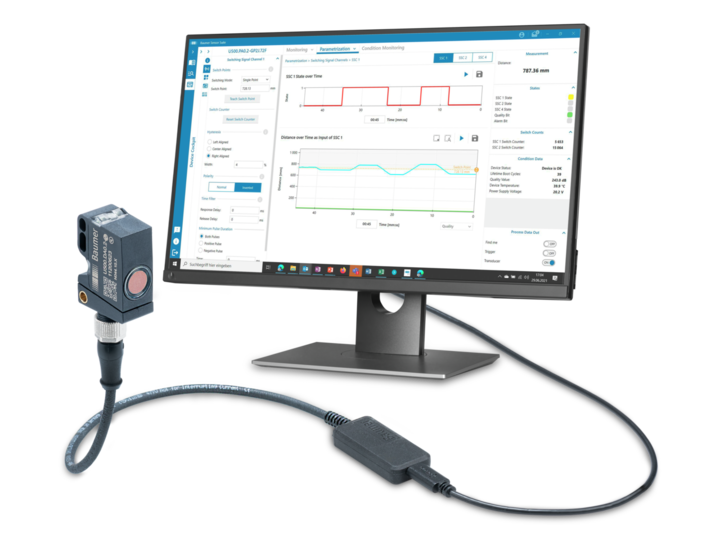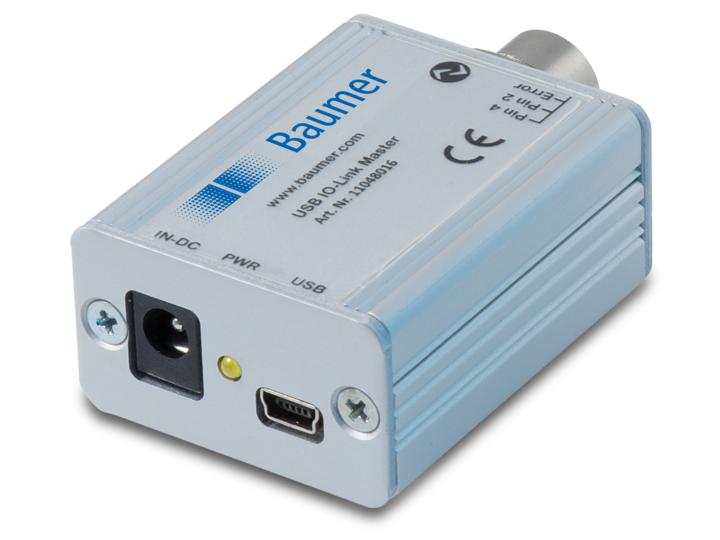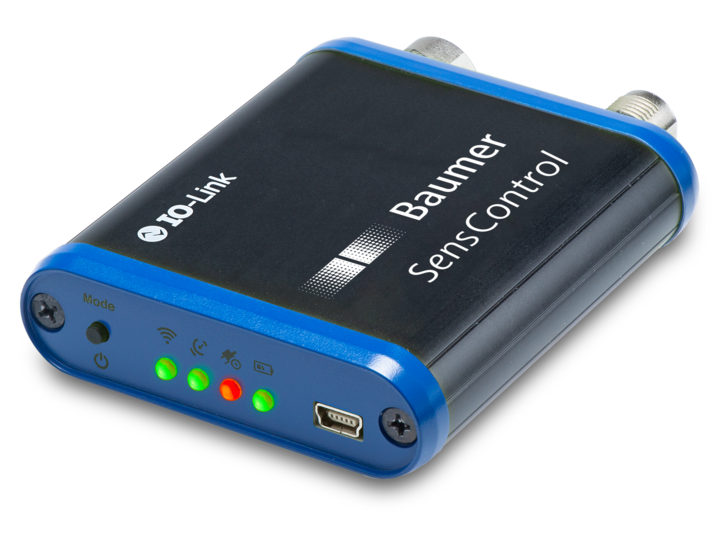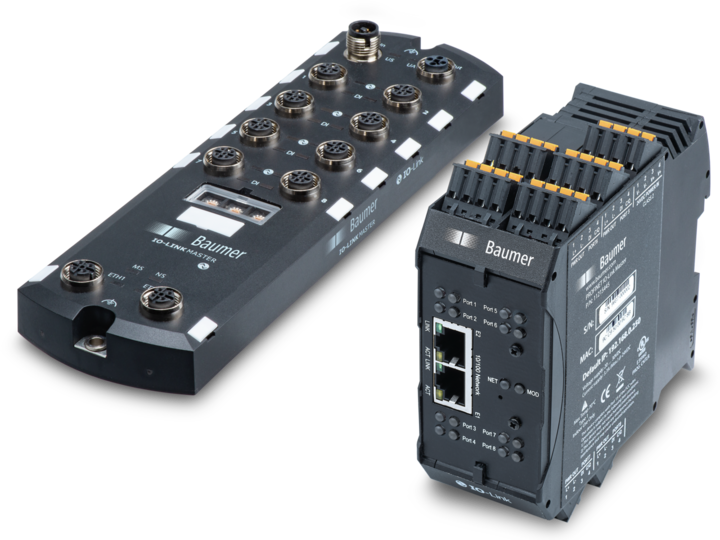Easy and fast commissioning
IO-Link allows for more parameters than so-called sensor teaching, for example freely selectable switching points, adjustable measuring ranges, filter functions and much more. This way the sensor is reliably configured to the application. PC user interfaces or mobile devices allow for user-friendly and place-independent configuration. More additional value in the event of sensor exchange is provided by automatic parameter transfer via IO-Link Master for upload into the new Baumer sensor. In addition, easy and automated parameterization during format alignments in ongoing production offers maximum flexibility and machine performance.
Dual Channel – digital and analog interface benefits all at once
By SIO mode (Standard In-Out Mode), the IO-Link standard defines a conventional operating mode for switching sensors. However, standard IO-Link sensors do not enable analog control. Baumer recognized this early on and has implemented additional outputs allowing digital, analog or hybrid sensor operation.
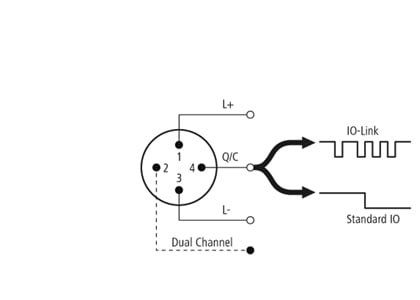
Thanks to Dual Channel with analog output, the sensor is capable of conventional control architectures and digital interfaces. In other words, the sensors feature 4 ... 20 mA analog output AND digital IO-Link interface. This way they offer all IO-Link benefits in setup and commissioning by considerably simplified sensor parameterization and further allow for process control via 4 ... 20 mA analog output. Thus, they offer all IO- Link benefits even if the controller is not yet IO-Link ready. Both cannels can be utilized simultaneously. This provides users with maximum flexibility for a wide range of applications in process automation.
Added value by digital sensor data
Data is the most important basis for process and product optimization. Digital IO-Link interface provides access to valuable secondary data. However, precondition are sensors with outstanding primary functions. Only if sensors deliver reliable and process data for efficient plant control and monitoring , these secondary data really provide added value.
Thanks to IO-Link, sensors can communicate these additional information, such as process, analysis or diagnostic data, to the controller or even store them to retrieved later if required. Secondary data may include sensor-specific information, such as sensor temperature. In addition, thanks to IO-Link sensors can deliver several physical measured values all at once. PP20H pressure sensor, for example, allows for temperature read out further to pressure information, and CombiLyz AFI conductivity sensor provides information on media concentration in addition to media conductivity. Doing so means process optimization and avoids time-consuming maintenance. Digital data transmission to the controller is without loss which eliminates the need for analogue conversion.
IO-Link glossary
More detailed descriptions of the individual IO-Link functions and definitions can be found here:
Portfolio
Benefits to you
